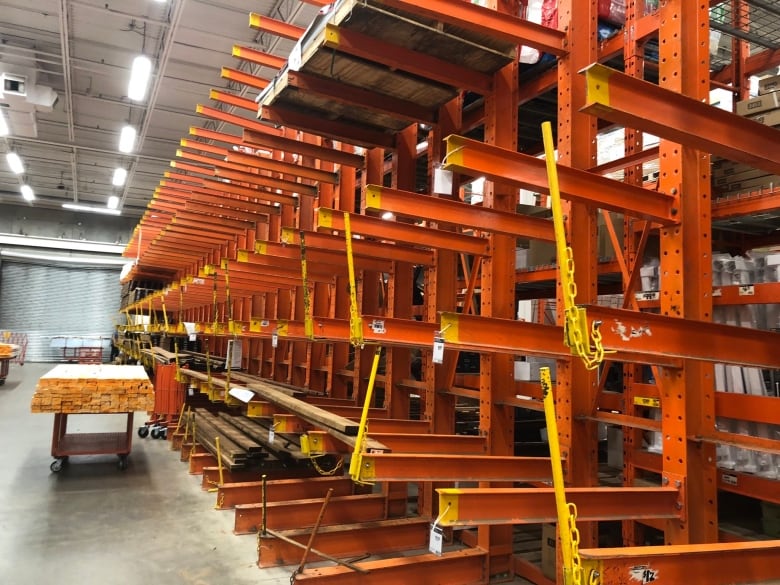
As if Canada’s housing sector wasn’t already irrational enough, a pandemic-induced lumber shortage is pushing the price of building a home even higher. The cost of basic lumber like two-by-fours has doubled since 2018.
“[That adds] tens of thousands of dollars depending on the size of your home,” said Kevin Lee, CEO of the Canadian Home Builders Association.
COVID-19 has wreaked havoc on just about every industry — sticking a wrench into the normal forces of supply and demand — and lumber is a prime example.
When the pandemic hit, lumber mills were forced to close. Then, a nation of people stuck at home started building more decks and fences. People renovated to accommodate their new work-from-home lives.
And that’s left mills scrambling to get logs, lumber yards short on supply, and contractors forced to pay more for what supply is available.
“Yeah, I worry,” said Chris Black, general manager of Century Mill Lumber in Stouffville, Ont.. “I worry, are we going to have wood to sell.”
Cost of materials double or more
Home builders buy two-by-fours in bulk. A thousand board feet cost $550 before COVID-19 hit. Now, the same amount costs more than $1,400, said Lee.
“So that’s almost tripling the cost of that two-by-four,” he said.
“A typical, say, 2,500 sq. ft. home, you’re over $30,000 in additional costs for lumber.”
He says a smaller, town-home style of building would cost an additional “$10,000 or more just in lumber alone.”
Contractors are finding themselves stuck in the middle.
Dave Kenney, co-owner of Bro-laws contracting, had a client looking to build a deck and a new fence pre-pandemic, but the project was delayed. He punched the updated costs into a spreadsheet and was shocked at how much the costs had risen.
“It blew my mind,” said Kenney.
“It was literally double the amount … just in materials.”
But with supply so low, contractors don’t have many options.
At Century Mill Lumber, Black spends more time on the phone trying to find material than he does in the yard working with his clients. Sometimes, he simply can’t find the lumber his clients need no matter where he looks.
“I’m not able to deliver like I was before,” he said. “As a business owner you never want your customers to go to another guy, because they may not come back.”

Disruptive demand, for now
Here’s the really hard part: no one knows how or when things will get back to normal.
Demand has fundamentally changed over the course of the pandemic and that’s causing major disruptions in the supply of everything from microchips to wood to houses.
The already over-heated housing sector saw a shift in demand: people left condos for houses, they left small houses for bigger homes with more space, and they left the city for smaller towns in search of a bargain.
This isn’t just a Canadian phenomenon; it’s happening across the U.S. too. Federal Reserve Chair Jerome Powell says the best cure for supply crunches and high prices is time.
“It’s very possible … that you will see bottlenecks emerge and then clear over time,” he said.
“These are not permanent. It’s not like the supply side will be unable to adapt to these things. It will — the market will clear. It just may take some time.”
In normal times, an increase in home renovations and a spike in DIY projects would make Black a very happy man.
But the last year has been stressful. He’s spent the last two-and-a-half years building up his business and nurturing client relationships. Any time he says he can’t deliver, he looks around at the staff he has and worries even more.
“I do worry,” he said. “If I have nothing to sell, how do i justify this big staff?”

On one hand, Black says the lumber shortage shows how delicate the global supply chain is.
On the other hand, he says this shortage is just about human behaviour — which he expects to change again, once the pandemic loses its grip.
“I do think that once COVID kind of settles, I think you will see people travel again. I think you will see people spending money on things they used to spend money on.”












